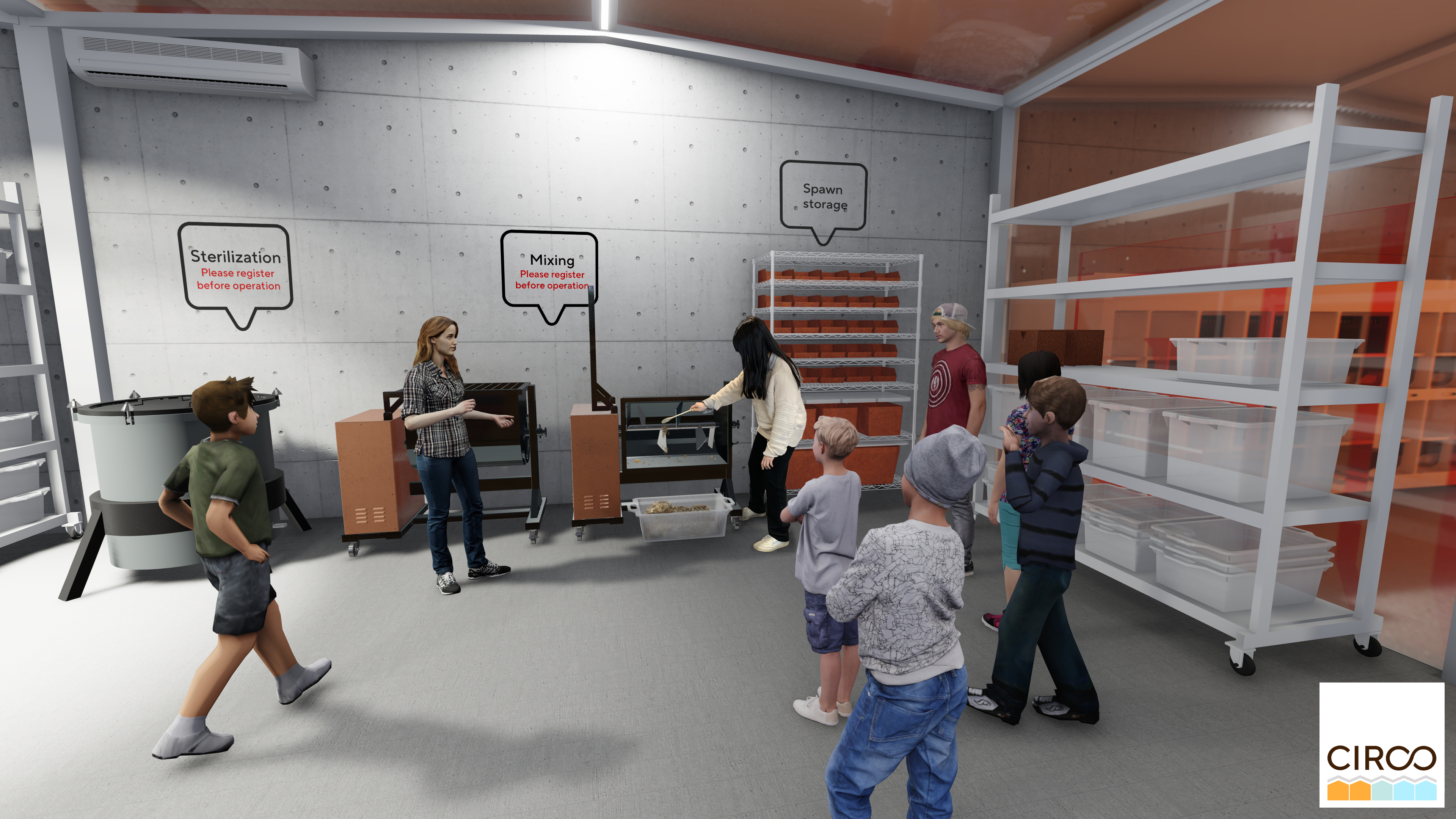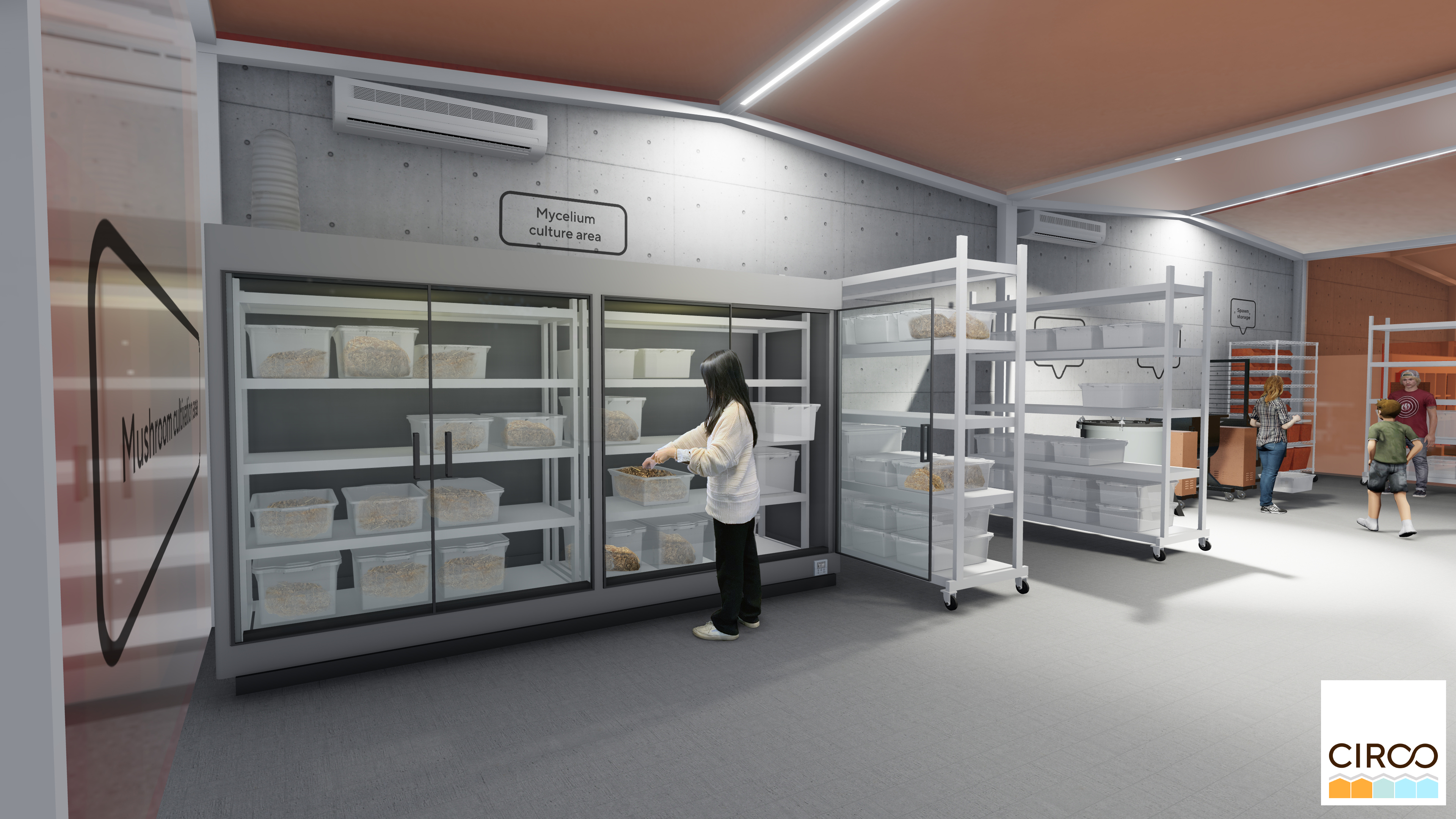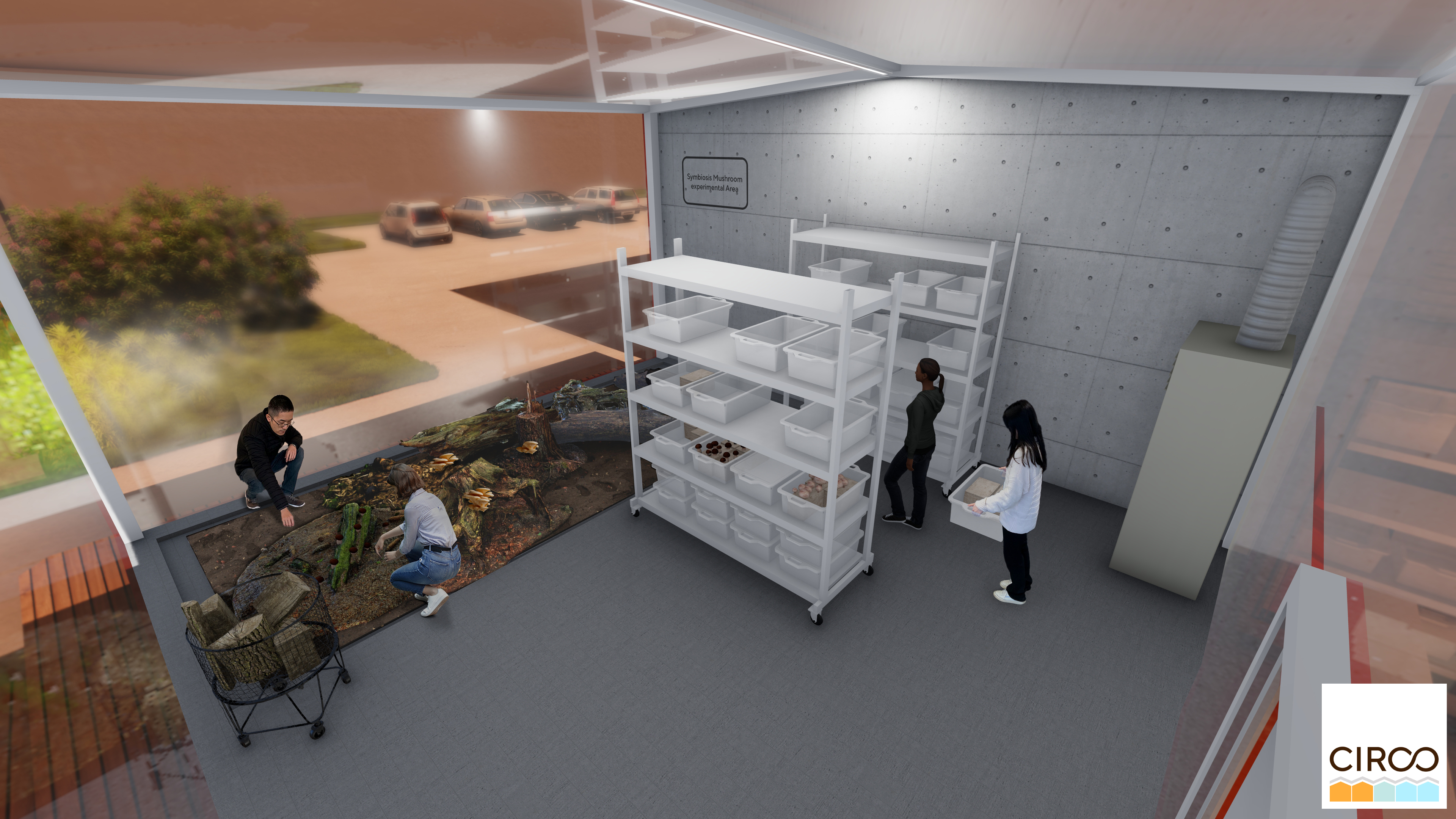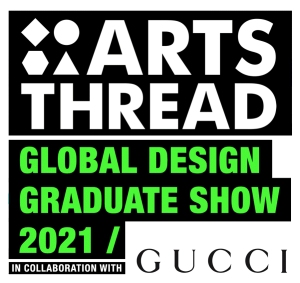Prizes

The people-oriented economic development has achieved unprecedented success, such as globalization, in the fields of large-scale agriculture, food industry, and efficient logistics industry, etc. However, from the industrial revolution to the present, we continue to reclaim land and extract resources from our mother nature, putting more and more pressure on the ecosystem. Meanwhile, the waste boom and greenhouse gas emissions from human activities have not been taken into account for the health of the earth. It is probably not surprising that global warming has also caused unpredictable extreme weather and natural disasters in recent years. Therefore, sustainable production methods have been urgently put on the stage.

The original economic model dominated by consumerism is in fact very short-sighted. Under the industrial cycle where interests are the priority, businesses mostly only pay attention to their target groups and the profit cycle and ignore the environment which we all depend on. Resources are taken from nature and also discarded to nature. We have not returned the waste to the ecosystem correctly, whereas we have been asking for new resources from the environment. This production method increases ecological pressure and threatens the earth’s ecological balance and species diversity to a certain extent. Humans have to bear the negative consequences of many environmental crises. For example, non-degradable plastic particles are polluting the ocean and entering our bodies through fish.
Here I show a typical example for explaining what is a regenerative Agriculture:
Growing edible Mushroom with bio-trash

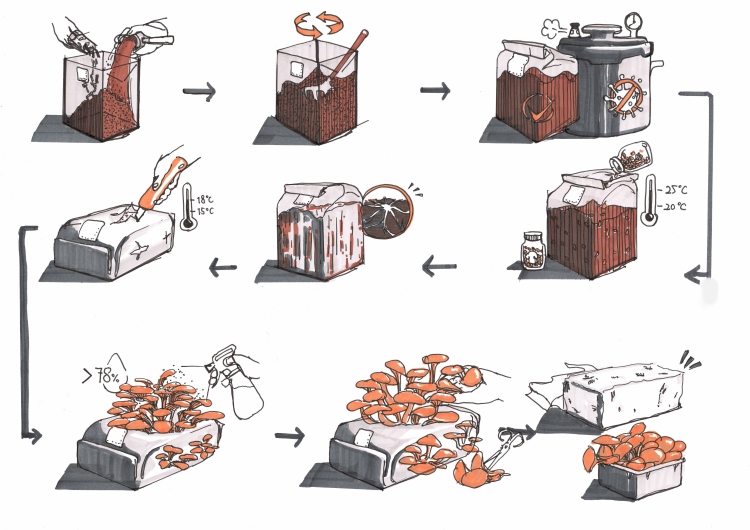
Here I will implement a method of regenerative agriculture. With the help of microorganisms, we can digest our garbage by transforming them into a good substance for mushroom cultivation. Mushrooms are very eco-friendly, Growing mushrooms could have an impact on carbon fixation. The mycelium can break down the garbage, making it good compost and at the end absorbed by the soil. For one thing, we can reuse garbage to produce food, and for another, we can feed these substrates to the soil to remediation.

Firstly, let us understand regenerative agriculture from micro to macro to re-recognize the benefits of circular economy, especially for the environment ignored by us. We need to start thinking about environment-centred design and giving the used waste a new sense to be recycled. In order to inspire the customer, we have to make people re-consider the cost we need to pay for every single resource we took from the environment, not just the human-object relationship (against consumerism and for rational consumption).

By ”Sense-making” Methodology, we can let people rethink from a longer-term perspective that garbage is not just garbage, but also valuable resources in the ecosystem. Through the project, we can also create an educational program in school garden to simulate the recycling system of circular economy, especially in schools for our customer of next generation. The students can participate in the gardening course of regenerative agriculture. As a positive feedback in the process, they can harvest their own food (like mushroom) to serve the campus (byoffering some to their school canteen) or the local community to cause public impact. This kind of gardening courses in the school can raise their awareness of future consumption and influence them to take part in the system of circular economy.

The construction plan “Circo” is currently in the concept stage. In fact, it is an educational platform and resource allocation organization based on the local educational institution alliance (network). The cost of the project depends on the construction scale of the school garden and the construction of the educational platform.



This project is going to be implemented in a middle school, Ricarda-Huch School Kiel, as a local demonstration case. We will build a school garden with regenerative agriculture in the centre of the school based on the design strategy map above. In the first half of this project, we will focus on the construction of the campus garden. Then we will continue to build an effective contact network to support the operation mode, and make this platform local, open and connected.




The white pavilion is for shelter from wind and rain and becomes a gathering public place. It leads peoples to the canteen as the main passage between two long row Houses as well. There are two different greenhouses under the pavilion, serving mushroom cultivation (orange) and plants (light blue), plus a semi-open workshop and a recycling station. The two greenhouses are relatively staggered, so those community residents can quickly identify them. Also, due to the height difference between the pavilion and the greenhouse, the classrooms should be sufficiently ventilated.

Course Hall unter the Pavillion

This project is based on the existing European Union of Secondary Education Institutions, to connecting major high schools, building school garden and training gardening teachers. The project aims to form the awareness of circular economy of the next generation of consumers and get more experience the process of circular economy in courses. On the other hand, students are encouraged to go out of the classroom and participate in recycling to understand the process of crop growth. Let them learn knowledge and understand the potential value of garbage with an environment-centric thinking.
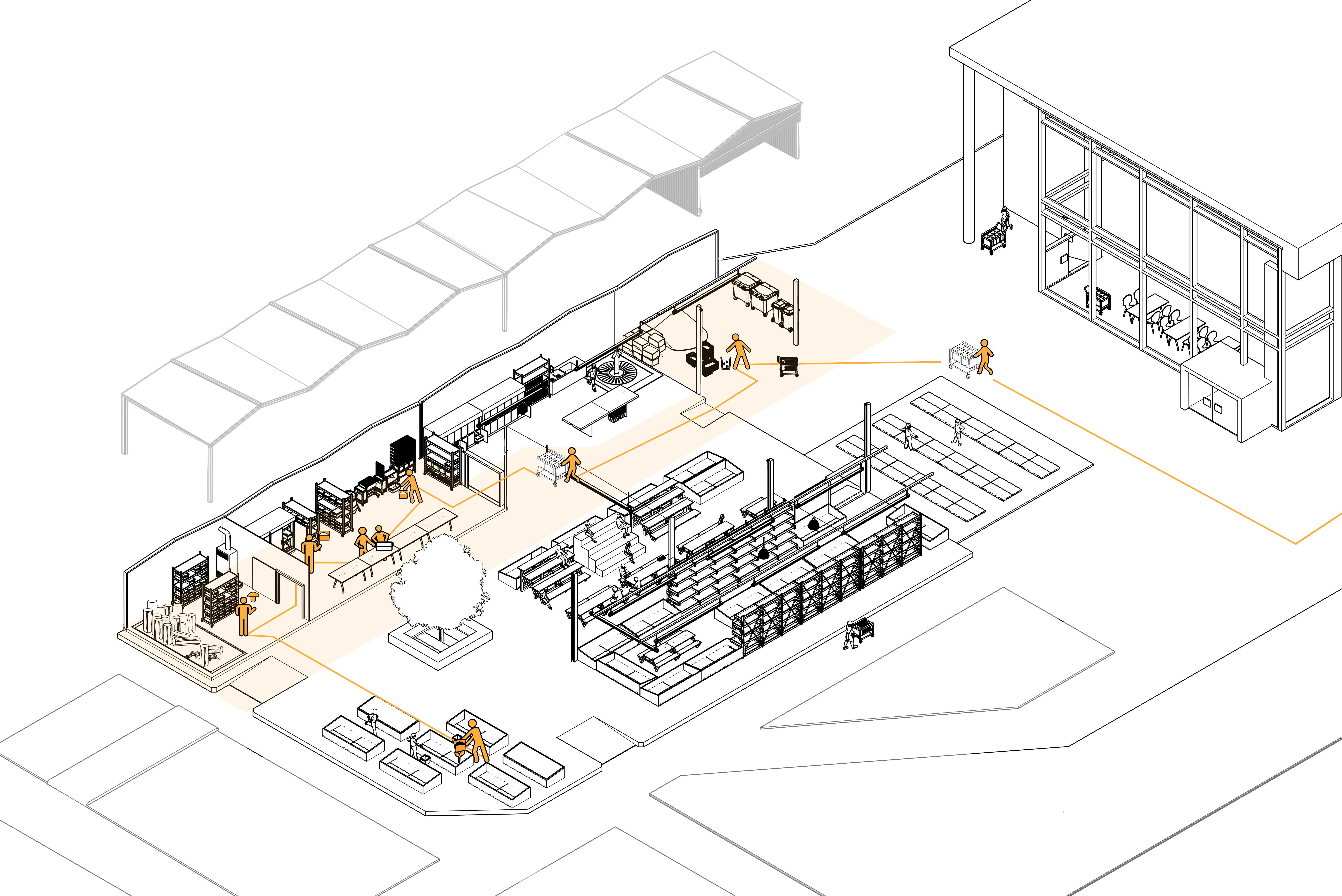
Traffic flow of mushroom cultivation with dry bio waste

Traffic flow of regenerative farming with earthworm compost


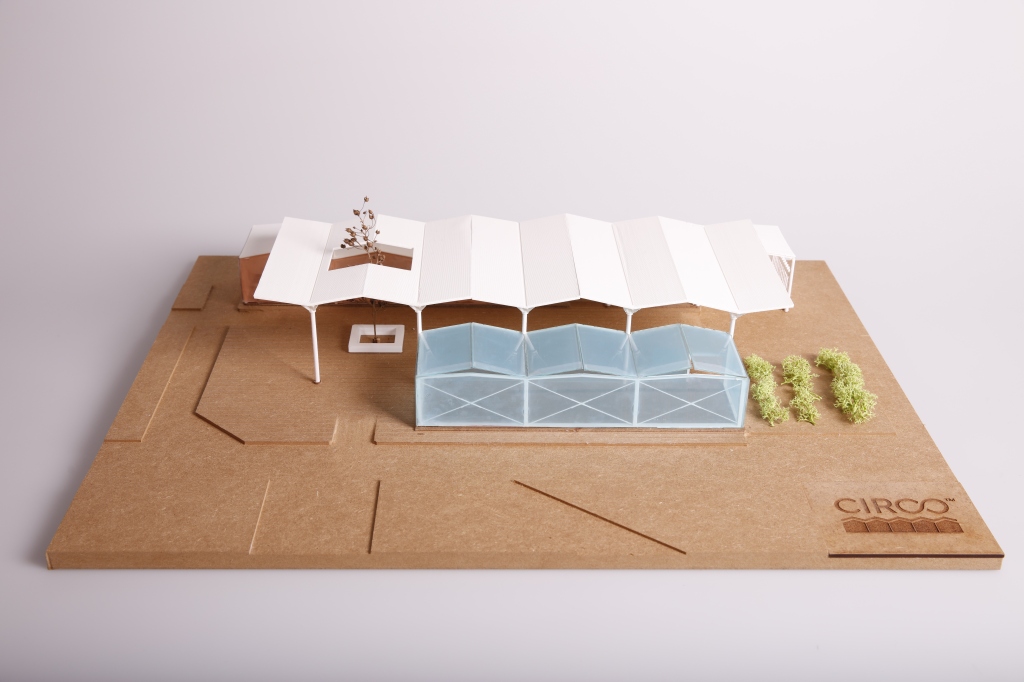
Architectural Model

